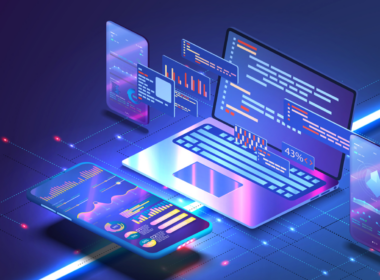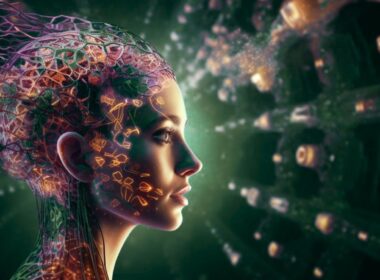“The ability to recognize patterns is the foundation of all learning.”
– Alfred North Whitehead
How does your phone unlock just by seeing your face? Or how does Netflix seem to know exactly what you want to watch next? It’s not magic—it’s machine learning pattern recognition at work.
Did you know that by 2028, we’ll be generating a staggering 394 zettabytes of data? That’s a lot of information! Machine learning pattern recognition helps us make sense of this data, turning it into valuable insights.
In this blog, we’ll break down what machine learning pattern recognition really means and why it’s more than just a buzzword. You’ll learn about the key algorithms driving these systems, practical applications across industries, and how businesses like yours can use it to thrive.
Stick around—this blog will make you see patterns in a whole new light!
Understanding Machine Learning Pattern Recognition
Have you ever wondered how an app seems to know exactly what you want to watch next, or how your email inbox can filter out spam so accurately?
Machine learning pattern recognition works in a similar way—only faster, smarter, and on a much larger scale. At its simplest, pattern recognition is the process of identifying patterns in data—just like how your brain identifies a familiar face in a crowd. But in machine learning, this process is driven by algorithms and models designed to spot connections humans might miss.
Think of patterns as the hidden rhythms in data. Whether it’s the way customers shop, the phrases in a text, or the pixels in an image, patterns reveal the underlying story. This ability is the bedrock of machine learning pattern recognition. For businesses, this means quicker insights, smarter decisions, and a competitive edge.
Why Pattern Recognition Matters for Your Business
Enhances Decision-Making
Making decisions is tough, especially with loads of data flying around. Pattern recognition makes it easier by spotting trends and simplifying the clutter. It helps you focus on what really matters, so you can make choices that drive results.
Identifies Hidden Insights
Let’s face it—data can be overwhelming. The real gold often lies buried beneath layers of noise. Machine learning pattern recognition digs deep, uncovering connections you’d probably miss otherwise. These insights can give you fresh ideas and uncover untapped opportunities.
Boosts Operational Efficiency
Nobody likes wasting time on repetitive tasks. Pattern recognition handles the heavy lifting by automating things like anomaly detection or sorting data. This frees up your time for bigger, more creative projects and helps your team work smarter.
Personalizes Customer Experiences
Understanding your customers can feel like solving a puzzle. Machine learning pattern recognition pieces it together for you, analyzing behavior and predicting preferences. Whether it’s creating a custom playlist or a personalized ad, it helps you deliver exactly what your audience wants.
Turn customer insights into unforgettable experiences.
Codewave specializes in redesigning customer journeys to make every interaction seamless and meaningful. Let’s help you improve your CX strategy and build stronger connections with your audience.
Strengthens Predictive Capabilities
Imagine knowing what’s going to happen before it does. Pattern recognition gives you that edge by forecasting trends and outcomes. From managing risks to planning ahead, it’s your go-to tool for staying one step ahead.
Powers Advanced Technologies
Self-driving cars, virtual assistants, and even your favorite streaming apps all rely on machine learning pattern recognition. It processes massive data in real time, making innovation possible. If you’re aiming for the future, this is the technology to watch.
Here’s how machines uncover these patterns with precision and speed—let’s see what’s behind the curtain!
How Machines Learn to See Hidden Patterns
One of the most fascinating applications you will come across is pattern recognition in machine learning, a technique that allows computers to identify patterns in data.
In fact, 53% of businesses in the U.S. have already integrated AI and machine learning into their operations? That’s the kind of power we’re talking about here!
Now, you might be asking, “How does it all work?” Let’s break it down in simple terms, step by step.
1. Data Collection and Preparation:
Everything starts with data. The better the data, the smarter the machine becomes.
Gather Relevant Data: This means collecting as much information as possible about the patterns you want the machine to recognize. For instance, if you’re working on machine learning pattern recognition for an image recognition system, you’ll need a mix of images—thousands of them.
Clean and Preprocess: Raw data is rarely perfect. It’s cleaned to remove errors, duplicates, or irrelevant entries. Then, preprocessing ensures the data is formatted consistently—like normalizing numerical values or filling in missing details. This step is crucial for giving the machine a clean slate to work with.
This clean, structured data sets the stage for effective learning.
2. Feature Extraction:
Not all data points are important. Features are the highlights the machine focuses on.
Pinpoint the Key Features: What makes a face a face? Eyes, nose, mouth, right? In the same way, depending on your goal, you identify the critical elements in your data—like trends in sales graphs or specific sound frequencies in audio files.
Prepare the Data for Learning: After identifying the features, the data is reformatted to make it suitable for machine learning pattern recognition. Techniques like dimensionality reduction condense large datasets into manageable formats while keeping the critical details intact.
This step helps machines zero in on what really matters, skipping the noise.
3. Model Selection and Training:
Here’s where the machine learns to recognize patterns.
Choose Your Algorithm: There are many different machine learning algorithms that can be used for pattern recognition, including:
- Supervised Learning: Algorithms like decision trees, random forests, and support vector machines are used when you have labeled data.
- Unsupervised Learning: Algorithms like clustering and anomaly detection are used when you have unlabeled data.
Train Your Model: Once you’ve selected an algorithm, you’ll need to train it on your prepared data. This step is crucial in machine learning pattern recognition, as it involves fine-tuning the algorithm to accurately identify patterns by minimizing the error between its predictions and the actual values.
Every iteration makes the machine a little smarter, building its ability to predict accurately.
4. Testing and Fine-Tuning the Model
Training isn’t the end of the story. You have to see how well the machine learned.
- Evaluate with Fresh Data: The model is tested with data it hasn’t seen before. This helps determine how well it can spot patterns without over-relying on memorization.
- Tweak for Better Performance: If the results fall short, adjustments are made—whether it’s adding more data, tweaking parameters, or refining your approach to machine learning pattern recognition to improve accuracy and efficiency.
Testing ensures the model is reliable and ready to handle real-world scenarios.
5. Deployment and Prediction
Once the model is ready, it’s time to put it to work.
- Deploy Your Model: Once you’re satisfied with your model’s performance, you can deploy it to a production environment. This might involve integrating it into a web application, a mobile app, or a standalone system.
- Make Predictions: Your deployed model can now be used to make predictions on new, unseen data. For instance, a machine learning pattern recognition model could identify objects in real-time video feeds with impressive accuracy.
Every prediction refines the system, making it more efficient over time.
Here’s how different algorithms tackle pattern recognition—let’s see which one matches your needs!
Types of Pattern Recognition Algorithms: Which One Fits Your Needs?
Now that we’ve explored the fundamental steps of machine learning pattern recognition, let’s delve into the heart of the process: the algorithms. These are the mathematical models that enable machines to learn and recognize patterns.
1. Supervised Algorithms: Learning With Labels
Supervised algorithms rely on labeled data. For instance, in spam detection, you train the model using emails tagged as “spam” or “not spam.” Popular choices include:
- Decision Trees: They work like a flowchart, making decisions based on clear, rule-based criteria. Ideal for credit scoring or loan approval processes.
- Support Vector Machines (SVMs): These excel at separating complex datasets, such as distinguishing fraudulent transactions.
- Neural Networks: Best for high-dimensional tasks like image recognition or speech processing.
These models learn the relationships in the data and predict outcomes for new, unseen inputs.
2. Unsupervised Algorithms: Spotting Hidden Clusters
Unsupervised algorithms thrive without labeled data, making them essential for tasks like machine learning pattern recognition. They identify patterns that aren’t obvious, such as grouping customers with similar purchasing habits. Examples include:
- Clustering (e.g., K-Means): Groups similar data points, such as identifying customer segments based on purchase behavior.
- Dimensionality Reduction (e.g., PCA): Reduces dataset complexity, retaining essential features—helpful for visualizing high-dimensional data.
These methods are powerful when exploring unknown data patterns.
3. Semi-Supervised Algorithms: A Blend of Both
When you have a mix of labeled and unlabeled data, semi-supervised algorithms step in. These methods make predictions with less labeled data, saving time and resources.
For example, a small number of labeled emails can help classify a much larger pool, showcasing the power of machine learning pattern recognition. Techniques like self-training allow these algorithms to expand their learning over time. Semi-supervised models are perfect for applications like medical imaging, where labeled data is scarce but valuable.
4. Reinforcement Learning: Learning Through Feedback
Reinforcement learning teaches machines through trial and error, which is especially effective in machine learning pattern recognition. Self-driving cars are a prime example—they earn rewards for obeying traffic rules and face penalties for errors.
Algorithms like Q-learning or Deep Reinforcement Learning allow systems to optimize actions based on feedback, excelling in robotics, gaming, and logistics.
How to Choose the Right Algorithm for Machine Learning Pattern Recognition
| Algorithm Type | Best Suited For | Data Requirements | Examples of Use Cases | Key Advantage |
| Supervised Algorithms | Predictive tasks with labeled datasets | Large labeled datasets | Fraud detection, credit scoring, product recommendations | High accuracy with well-defined data relationships |
| Unsupervised Algorithms | Exploring unknown patterns or structures | Unlabeled datasets | Customer segmentation, anomaly detection | Identifies hidden structures in data |
| Semi-Supervised Algorithms | When labeled data is limited but unlabeled data is abundant | Small labeled data, large unlabeled data | Medical imaging, sentiment analysis | Cost-effective for domains with scarce labeled data |
| Reinforcement Learning | Dynamic environments requiring continuous learning and adaptation | Feedback-based learning environments | Self-driving cars, robotics, gaming | Learns and optimizes through trial and error |
Now that you understand the algorithms, let’s see how businesses bring pattern recognition to life!
Real-World Uses of Pattern Recognition in Business
Machine learning pattern recognition helps businesses tackle challenges head-on by finding patterns and insights in data that might seem impossible to detect manually. Whether it’s boosting efficiency or improving customer interactions, you’ll find its applications everywhere.
Let’s break down where this technology is making waves and how it can help your business.
1. Image Processing: Turning Visual Data into Actionable Insights
Machine learning pattern recognition is helping to improve image quality and extract useful information from images. By recognizing patterns in images, machines can make decisions that were once too complex for humans. This is especially useful in fields like healthcare and security.
- Healthcare: Machine learning helps radiologists spot abnormalities in X-rays, CT scans, and MRIs, leading to earlier detection of diseases like cancer. Algorithms can identify patterns in medical images that might go unnoticed by the human eye, speeding up diagnosis and treatment.
- Security: In security, machine learning models can detect faces, license plates, and suspicious activities in real-time, providing more reliable surveillance without human intervention.
2. Bioinformatics: Discovering Patterns in Biological Data
Bioinformatics involves analyzing biological data to find patterns that can help predict diseases and understand genetics. With machine learning, researchers can gain deeper insights into genetic disorders, drug responses, and more.
- Genetics: Machine learning algorithms help identify patterns in genetic sequences, allowing scientists to predict how certain genes influence diseases. This is crucial in creating personalized medicine tailored to individual genetic profiles.
- Drug Discovery: By analyzing patterns in proteins and molecules, machine learning is speeding up the discovery of potential drugs, reducing time and costs in the pharmaceutical industry.
3. Recommender Systems: Tailoring Experiences to Customers
Ever wonder how Netflix knows what shows you’ll love? That’s the power of machine learning pattern recognition in recommender systems. These systems analyze your behavior, past choices, and preferences to suggest products, movies, or services.
- E-commerce: Online retailers like Amazon use recommender systems to suggest products based on your previous purchases or browsing history, making the shopping experience more personalized.
- Streaming Services: Netflix and Spotify use machine learning to recommend movies, shows, or music that align with your interests, keeping you engaged and increasing retention.
4. Fingerprint Identification: Making Security Smarter
Fingerprint recognition is a widely used biometric authentication method that relies on machine learning to match and verify patterns in fingerprints. It’s fast, secure, and incredibly accurate.
- Smartphones: Many modern smartphones use fingerprint recognition for quick, secure unlocking. Machine learning ensures that even small, subtle differences in fingerprints are detected for greater accuracy.
- Security Systems: Airports and banks use fingerprint recognition to ensure authorized access, eliminating the need for physical keys or passwords, which can be compromised.
5. Financial Fraud Detection: Catching Fraud Before It Happens
Machine learning pattern recognition is revolutionizing fraud detection by analyzing transactional data and spotting unusual patterns that could indicate fraudulent activity. This helps businesses detect fraud early, preventing financial losses and ensuring better security for their customers.
- Banking: Machine learning algorithms can flag unusual spending patterns, such as transactions from a new location or significant deviations from typical spending behavior, which could signal fraudulent activity.
- E-commerce: Online retailers use machine learning to track purchasing behavior and detect patterns that suggest fraud, like multiple purchases from different credit cards within a short time frame.
6. Natural Language Processing (NLP): Understanding Human Language
NLP is a field of machine learning that helps computers understand, interpret, and respond to human language. This is the technology behind chatbots and virtual assistants that interact with customers in real time.
- Customer Support: Many businesses use NLP-powered chatbots to answer customer queries 24/7. These bots can analyze customer input and provide responses that are as accurate as a human agent.
- Sentiment Analysis: Companies use NLP to analyze customer feedback, reviews, and social media posts. By detecting the sentiment behind the words, businesses can gauge customer satisfaction and improve services.
7. Predictive Maintenance: Preventing Equipment Failures
In industries like manufacturing and aviation, machine learning helps predict when machinery is likely to fail, allowing businesses to perform maintenance before it happens.
- Manufacturing: In factories, machine learning algorithms monitor machinery, identifying patterns that signal wear and tear. This helps companies avoid costly breakdowns and improve the lifespan of equipment.
- Aviation: Airlines use machine learning to predict when parts in an aircraft will need maintenance, improving safety and reducing unexpected delays.
8. Supply Chain Optimization: Keeping Goods Moving Efficiently
Machine learning pattern recognition is also being used to optimize supply chains by predicting demand, managing inventory, and improving shipping logistics.
- Inventory Management: By analyzing sales patterns and seasonal trends, machine learning can predict which products will be in demand and when, helping businesses keep the right inventory levels.
- Logistics: Machine learning helps companies determine the best shipping routes and delivery times, reducing costs and improving customer satisfaction.
9. Customer Sentiment Analysis: Gaining Insights from Feedback
Understanding customer emotions and opinions is key to improving products and services. Machine learning pattern recognition helps businesses analyze customer reviews, social media comments, and surveys to gain insights into customer sentiment.
- Marketing: By analyzing customer reviews and feedback, machine learning models can identify trends, such as the most common positive or negative comments, allowing businesses to adjust their marketing strategies accordingly.
- Brand Management: Companies use sentiment analysis to monitor how their brand is perceived online. It helps them understand public opinion and address potential issues before they escalate.
10. Healthcare Diagnostics: Detecting Diseases Early
Machine learning pattern recognition is transforming healthcare diagnostics by identifying patterns in patient data to detect diseases like cancer, diabetes, and heart disease early, improving patient outcomes.
- Cancer Detection: In oncology, machine learning models analyze medical images and patient records to detect early signs of cancer, often with higher accuracy than human doctors.
- Chronic Disease Management: Machine learning helps track patient data over time, enabling doctors to predict the onset of chronic diseases and provide preventive care.
With these real-world examples in mind, let’s now check out the essential tools for pattern recognition!
Your Toolkit for Machine Learning Pattern Recognition
The right tools can completely transform how you approach machine learning pattern recognition. They simplify everything—from creating your models to deploying them—while cutting down on effort and maximizing efficiency.
If saving time and achieving better results sounds good to you, let’s explore some of the most effective tools in this space:
TensorFlow
TensorFlow, created by Google, is a widely used open-source platform for building machine learning models. It’s perfect for handling complex models and large datasets, making it especially useful for industries like finance and healthcare, where accurate data interpretation is crucial.
PyTorch
PyTorch stands out with its user-friendly design and dynamic computational graphs, making it an excellent choice for machine learning pattern recognition tasks. Researchers love it because it allows them to experiment quickly, tweak models, and test hypotheses on the fly. It’s a great tool if you’re working on cutting-edge research and need flexibility.
Scikit-learn
For simpler tasks, Scikit-learn is a top choice. It’s a Python–based library that’s great for beginners and experts alike. With a range of algorithms for classification and regression, Scikit-learn helps you build effective pattern recognition models without the complexity of larger frameworks.
Keras
Keras, built on top of TensorFlow, simplifies the process of creating deep learning models, making it a powerful tool for machine learning pattern recognition. If you’re focused on building neural networks and don’t want to get caught up in all the low-level details, Keras is a fantastic option. It speeds up the prototyping phase and helps you test your ideas quickly.
Google Cloud AutoML
Not everyone has a full data science team, and that’s where Google Cloud AutoML comes in. It’s a cloud-based tool that makes building machine learning models accessible to non-experts. If you want to incorporate pattern recognition into your business without needing deep technical knowledge, this is a great way to start.
Want infrastructure that’s as smart as your AI?
At Codewave, we design scalable infrastructure tailored to your business needs. From seamless integration to high-performance setups, our Infrastructure Development services ensure your AI models run effortlessly.
Amazon SageMaker
SageMaker is a fully managed service from Amazon that helps you through the entire machine learning lifecycle. From data preprocessing to model deployment, SageMaker offers tools and workflows that can speed up your machine learning pattern recognition projects and help them scale effectively.
IBM Watson Studio
Watson Studio is ideal for collaborative projects. With its cloud-based environment, teams can work together to build and deploy machine learning models. It’s an excellent choice if you’re managing multiple people working on data science initiatives or want access to IBM’s advanced AI technologies.
H2O.ai
If you’re looking for an AutoML platform with advanced capabilities for machine learning pattern recognition, H2O.ai is a go-to. It automates most of the machine learning process, allowing you to create powerful models without writing a ton of code. This is especially helpful for businesses looking to deploy machine learning without extensive resources.
RapidMiner
RapidMiner takes a no-code approach to machine learning. This makes it an excellent tool for those who need to build models but don’t have a deep technical background. It allows you to quickly create data pipelines and test models, all with minimal coding.
MATLAB
MATLAB is perfect for those who need deep mathematical modeling and data analysis, particularly in machine learning pattern recognition. It’s especially useful for industries like engineering or finance, where data analysis and pattern recognition need to be highly precise. With its robust set of functions, MATLAB helps you visualize and analyze data easily.
Here’s where the magic happens—bringing pattern recognition to life with the right ML partner.
Why Codewave Should Be Your ML Partner
At Codewave, we don’t just build tech—we craft meaningful solutions. As a design-thinking-led digital innovation company with over 15 years of experience, we’ve worked across industries to turn ideas into real, impactful systems.
Our focus isn’t just on delivering innovative machine learning solutions; it’s on ensuring they align with your goals and truly work for your business.
What We Bring to the Table
- Machine Learning Development: We design systems that adapt to your needs and make smarter decisions over time.
- Computer Vision: Transform how you process visual data with automation that saves time and effort.
- Neural Network Development: Build intelligent models that mimic human problem-solving.
- Deep Learning: Solve complex challenges with advanced algorithms that grow with your business.
Why Work With Codewave?
Here’s the thing: anyone can promise innovation, but we deliver because we genuinely care about your success.
- Vision Alignment: Your goals become ours, right from the start.
- Empathy in Design: We don’t just focus on functionality; we create experiences that people love.
- Scalability and Security: Whether you’re a startup or scaling globally, we’ve got you covered.
- Results You Can Trust: Our work speaks for itself.
Let’s turn your ideas into reality. With Codewave, machine learning isn’t just a tool—it’s your competitive edge.
That brings us to the end of this blog!
Conclusion
“Without data, you’re just another person with an opinion.”
– W. Edwards Deming
Machine learning pattern recognition is no longer just a buzzword—it’s a transformative force. Did you know the global machine learning market is set to hit USD 225.91 billion by 2030? This growth highlights how essential it’s becoming for businesses aiming to stay competitive and innovative.
Pattern recognition allows you to uncover hidden insights from raw data. Imagine using it to predict customer behavior, streamline operations, or even revolutionize product development. It’s not just about numbers; it’s about using those patterns to tell a story and make better decisions.
Here’s the thing: adopting machine learning pattern recognition isn’t just for tech giants. At Codewave, we make these tools accessible and effective for businesses of all sizes. From customized AI solutions to real-world implementation, we help you turn possibilities into achievements. You can explore our tailored AI and Machine Learning services to get started.
The future is all about working smarter, not harder. So, what’s your next move? Whether you’re just starting with machine learning or looking to take it further, now’s the time to act. Let’s use your data to its fullest potential—together.
Also read: What is the Difference Between Machine Learning and Business Intelligence?
Codewave is a UX first design thinking & digital transformation services company, designing & engineering innovative mobile apps, cloud, & edge solutions.







